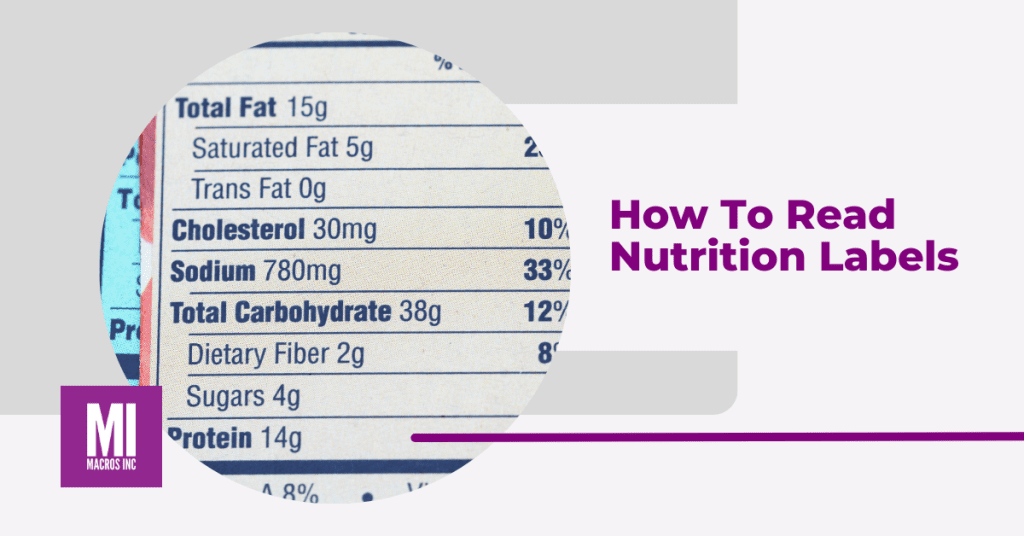When it comes to making healthy choices at the grocery store, knowing how to read nutrition labels is an essential skill. Nutrition labels provide important information about the ingredients, serving size, and nutrient content of packaged foods.
However, with so much information packed into a small space, it can be overwhelming to know what to look for.
In this article, we’ll break down the key components of a nutrition label and provide tips for how to use this information to make informed decisions about the foods you buy and eat.
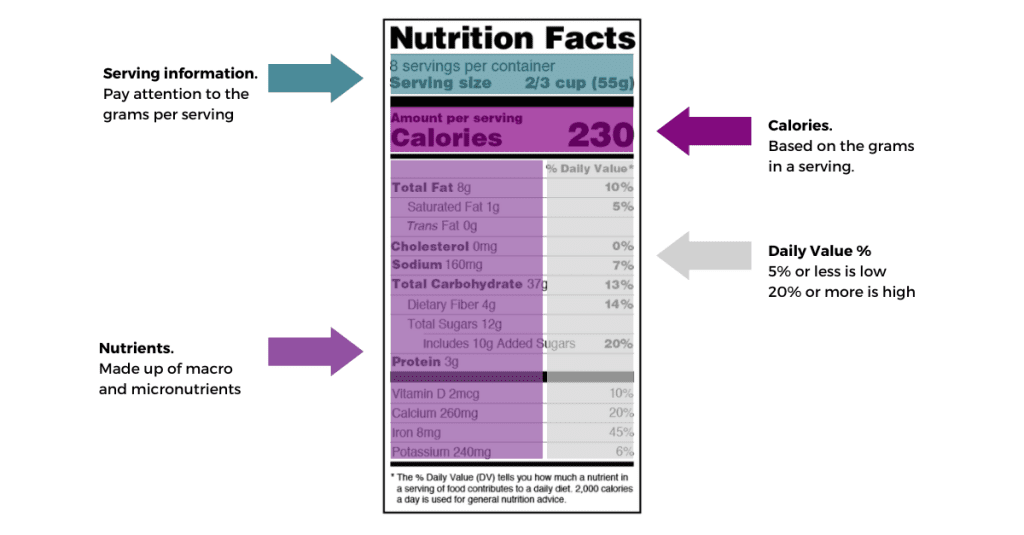
Jump to a Topic
Serving Sizes
The first thing to look at when reading a nutrition label is the serving size. This tells you the amount of the food that the nutrient information is based on. It’s important to note that the serving size on the label may not be the same as the amount you actually consume.
For example, if the serving size is one cup of cereal but you typically eat two cups, you’ll need to double the nutrient information to accurately reflect the amount you consume. Understanding serving sizes is key to managing portion sizes and ensuring that you’re getting the right amount of nutrients from the foods you eat.
We recommend using grams for the most accurate nutrition values.
Macronutrient and Calories per Serving
Once you know the serving size, you can then look at the calorie and macronutrient content of that serving. The calorie count tells you the amount of energy in the food, while the macronutrient breakdown (which includes protein, fat, and carbohydrates) tells you the type of energy in the food.
Understanding the calorie and macro nutrient content of the foods you eat can help you make more informed decisions about which foods to choose and how much to eat. This may be based on meeting your macronutrient needs or knowing how you feel after eating certain foods.
Weighing Food to Accurately Gauge Calories
To accurately gauge the calorie content of a food, it can be helpful to weigh your serving instead of relying on volume measurements like cups or tablespoons. This is because the weight of a food can vary depending on how tightly it’s packed or how it’s cut.
By using a kitchen scale, you can get a more precise measurement of your serving size, which can help you track your calorie intake more accurately. If you don’t have a scale, you can use measuring cups or spoons, but be aware that this method may not be as accurate.
Remember that small differences in serving size can add up over time, so it’s important to be as precise as possible.
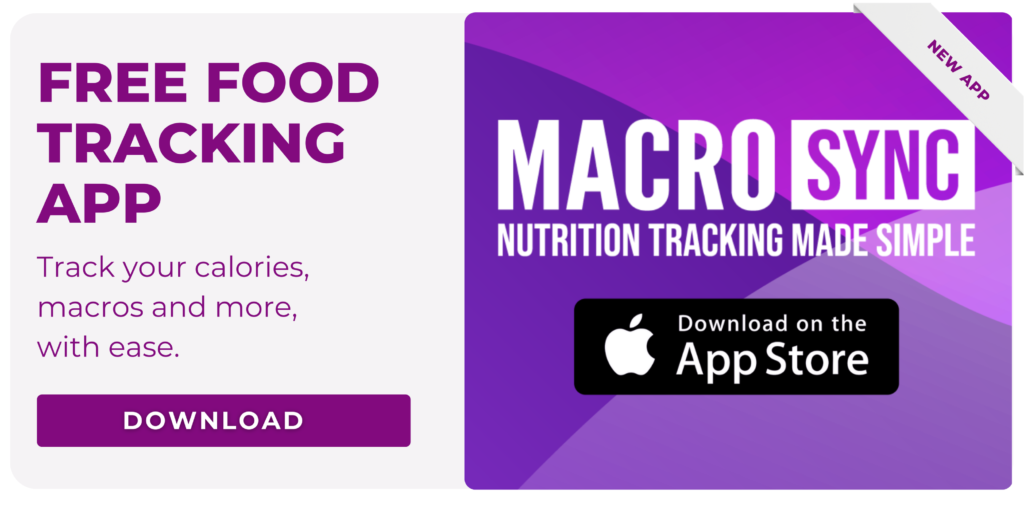
Using Food Logging Apps to Help
Another helpful tool for reading nutrition labels and tracking your food intake is a food logging app. Many apps allow you to scan the barcode of a packaged food and automatically input the serving size and nutrient information into your daily log. This can be a convenient way to keep track of your food intake and ensure you’re staying within your calorie and macro nutrient goals.
However, it’s important to keep in mind that the accuracy of these apps depends on the accuracy of their databases. If you’re inputting a food for the first time, it’s a good idea to weigh your serving size to ensure the app’s database is correct and create a custom entry for the item.
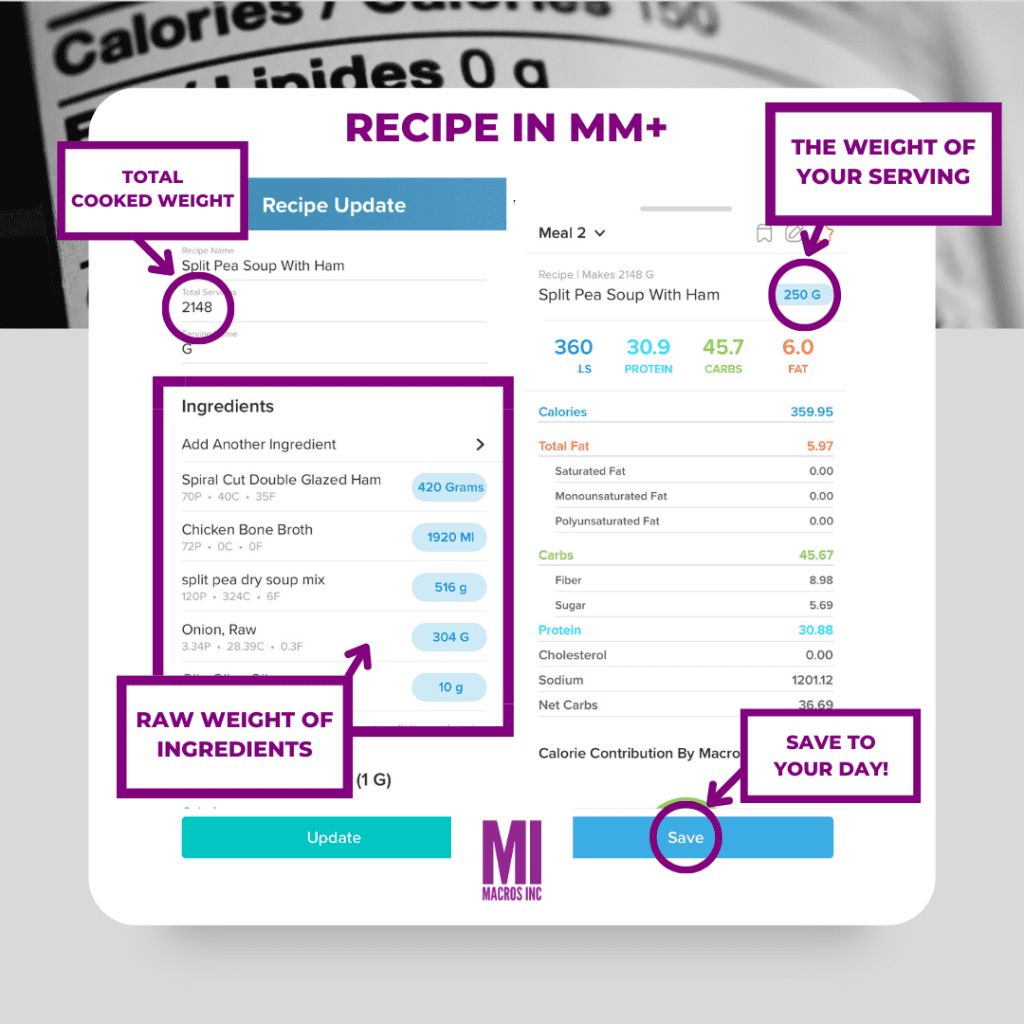
Nutrition Label Explained
Calories
One of the most important pieces of information on a nutrition label is the number of calories per serving. This number represents the total amount of energy the food provides per serving. It’s important to keep in mind that the number of calories you need each day depends on various factors such as age, gender, weight, height, and activity level.
To maintain a healthy weight, it’s generally recommended that you consume the number of calories that’s appropriate for your individual needs. This means that you may need to adjust your portion sizes or choose lower calorie options if you’re trying to lose weight.
The easiest way to figure out how many calories you need according to your goal is to a use Macro Calculator.
Fat
It’s important to pay attention to the amount and type of fat in the food you’re eating, as some types of fat are healthier than others.
For example, unsaturated fats, which are found in foods like nuts, seeds, avocados, and fatty fish, can help to lower your risk of heart disease and provide other health benefits.
On the other hand, saturated and trans fats, which are found in foods like butter, cheese, fried foods, and processed snacks, can raise your cholesterol levels and increase your risk of heart disease. When reading a nutrition label, look for foods that are lower in saturated and trans fats, and higher in healthier unsaturated fats.
Carbohydrates
Carbohydrates are another macronutrient that’s listed on nutrition labels. They include sugars, starches, and fiber, and can be found in a variety of foods like bread, pasta, fruits, vegetables, and sweets. It’s important to pay attention to the total amount of carbohydrates in the food you’re eating, especially if you have certain health conditions like diabetes.
Additionally, you can look at the breakdown of carbohydrates into sugar and fiber, which can provide more information about the quality of the carbohydrate source.
A food that’s high in fiber r can help to promote feelings of fullness and regulate blood sugar levels. When reading a nutrition label, aim for foods that are high in fiber and low in added sugars.
Protein
Protein is another important macronutrient listed on nutrition labels. It’s necessary for building and repairing tissues in the body, as well as for producing enzymes, hormones, and other important molecules.
Protein can be found in a variety of foods like meat, poultry, fish, beans, nuts, and dairy products. When reading a nutrition label, pay attention to the amount of protein per serving. Depending on your individual needs and goals, you may need more or less protein in your diet. It’s also important to consider the quality of the protein source.
Animal-based proteins are generally considered to be of higher quality than plant-based proteins, as they contain all of the essential amino acids that the body needs. However, plant-based proteins can still be a healthy and sustainable choice, especially when combined with other protein sources to ensure a complete amino acid profile.
Vitamins and Minerals
In addition to macronutrients, nutrition labels also provide information on the vitamin and mineral content of a food product. Vitamins and minerals are essential micronutrients that the body needs in small amounts to function properly.
They play a vital role in maintaining a healthy immune system, supporting bone health, and aiding in energy metabolism, among other functions. When reading a nutrition label, look for the amounts of vitamins and minerals listed per serving.
The % Daily Value (%DV) can also be a helpful tool in determining whether a food is a good source of a particular nutrient. The %DV is based on a 2,000 calorie diet and represents the percentage of the recommended daily intake for a given nutrient that’s provided by a serving of the food.
Keep in mind that the %DV is a general guideline and your individual nutrient needs may vary depending on your age, sex, and overall health status.
Labels in the UK
Food labelling in the UK also carries the traffic light system on the fron of the packaging, this is designed to help you make informed decisions at a glance.
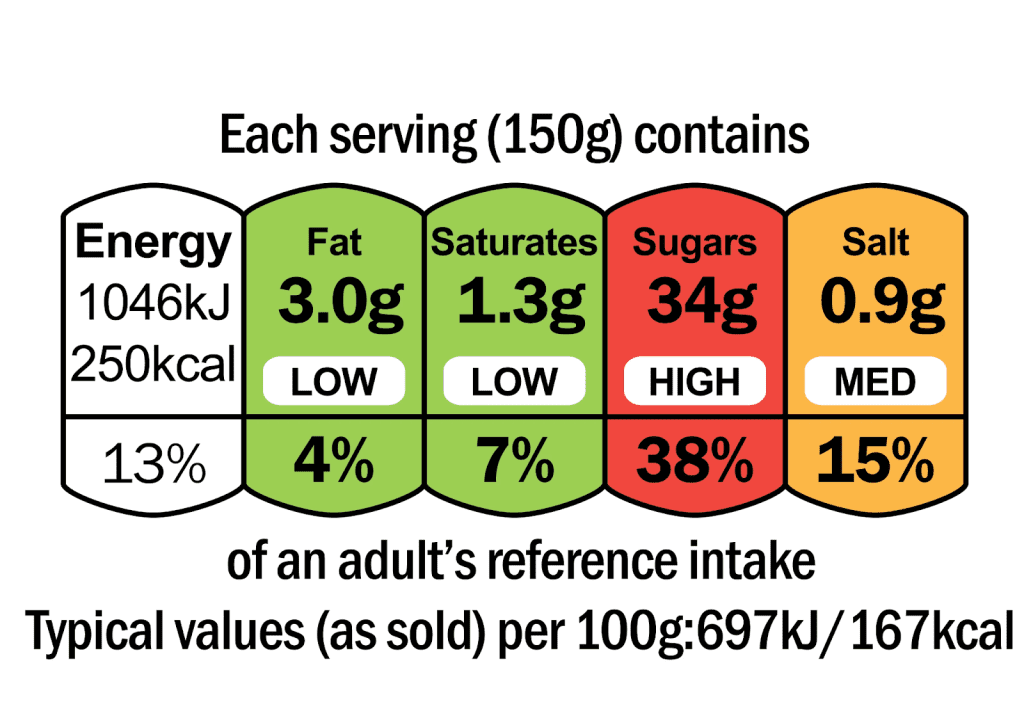
It is worth noting that just because something is red, it does not necessarily mean it should be avoided, it just means that the values are higher than the RIs guidelines.
Further information can be found here.
Try our nutrition coaching, for free!
Be the next success story. Over 30,000 have trusted Macros Inc to transform their health.
Simply fill out the form below to start your 14-day risk-free journey. Let's achieve your goals together!

